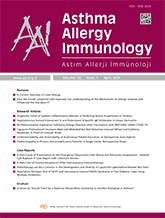


Objective: Transient receptor potential (TRP) channels are crucial for the response of many different mediators, including histamine and substance P. Currently, it is not clear whether stimulation of TRP channels alter the degranulation thresholds of skin mast cells. Thus, this proof of concept study aimed to test whether mast cell-driven wheal and erythema responses are modified by short-term stimulation of TRP channels with capsaicin.
Materials and Methods: Skin prick testing was applied with histamine and grass pollen extract in sensitized individuals, as a model to explore the possible effects of capsaicin on IgE-mediated itch, wheal, and flare development.
Results: We showed that short-term TRP stimulation by topical capsaicin treatment resulted with a significant difference in maximum wheal diameter (12.5±3.7 mm vs. 7.9±3.4 mm, p=0.02), average wheal area (76.4±31.0 mm2 vs 35.3±17.4 mm2, p=0.01), maximum erythema diameter (38.5±13.9 mm vs. 28.8±14.5 mm, p=0.07) and average erythema area (973±709 mm2 vs 556±499 mm2 ; p=0.02) between capsaicin-pretreated areas compared to placebo-pretreated areas. No differences in itch, wheal and erythema responses between capsaicin-pretreated and placebo-pretreated areas were observed after skin prick testing with histamine.
Conclusion: This study showed that short-term TRP stimulation increases IgE-mediated but not histamine-induced wheal and erythema responses.